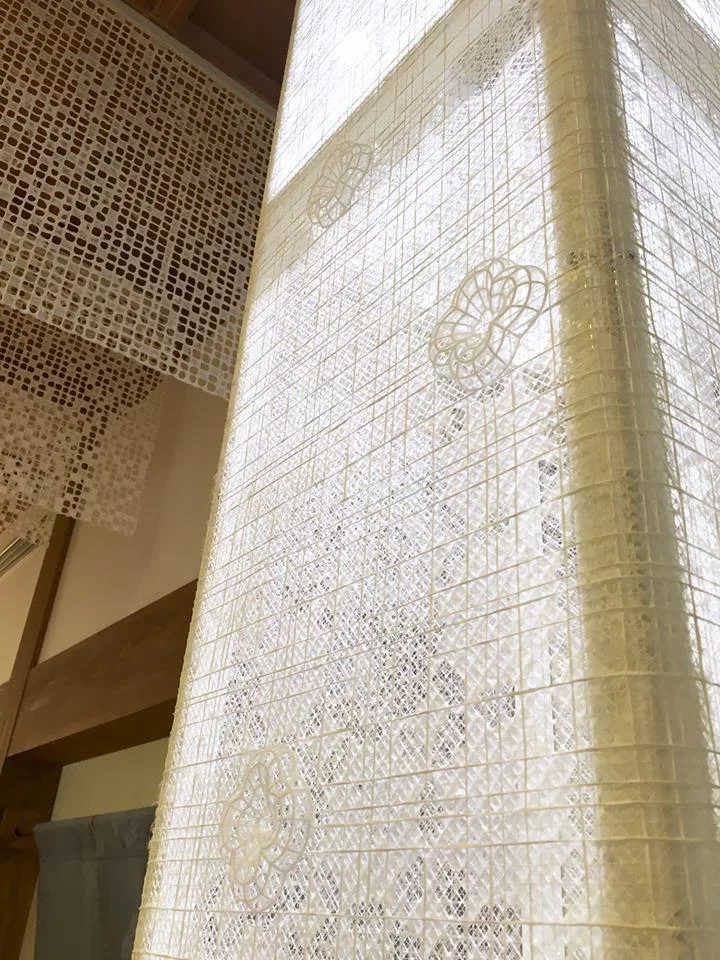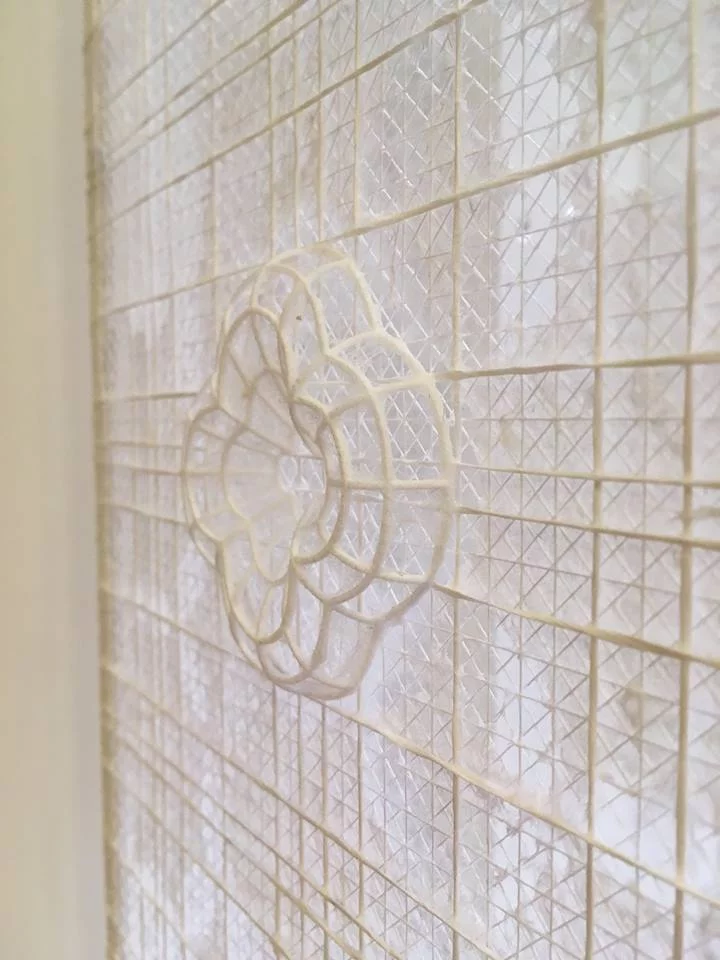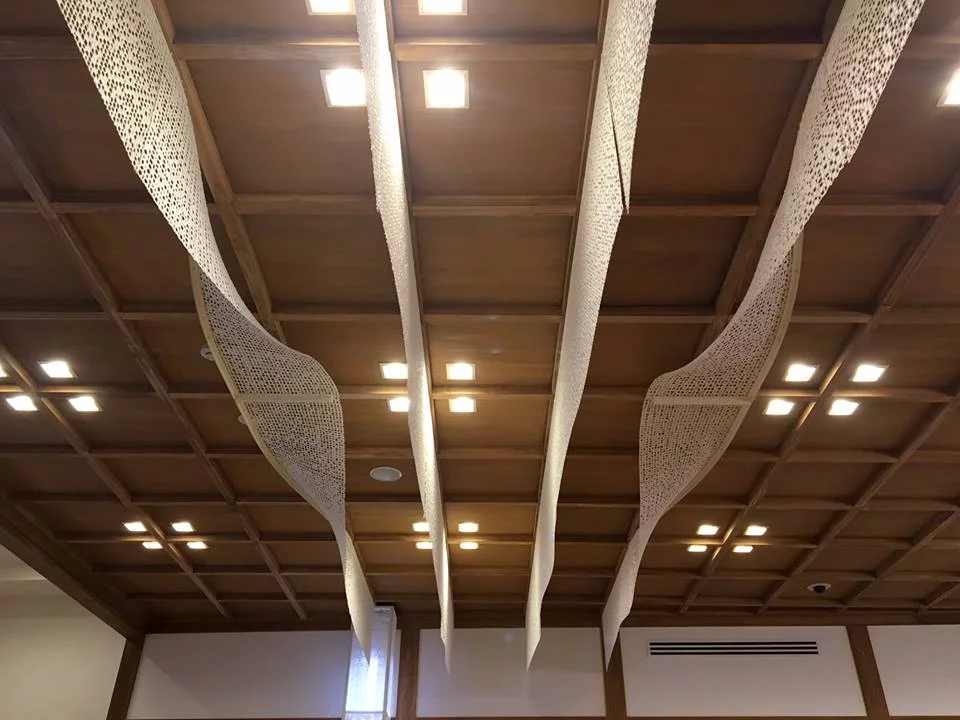Design and production / GK Kyoto
The entrance to this facility was designed using 3D technology to incorporate a soft, three-dimensional curved surface into the washi paper, in homage to the karahafu roof of the Dogo Onsen’s main building entrance.
Based on this design, a custom wooden tool for washi making was produced by folding boards using the bending techniques of woodworkers, and then gluing the attached boards together.
The three-dimensional curved surface was created by using shape-memory plastic wire and Japanese paper twisted into a lattice shape, with kozo (paper mulberry) stretched upstream. Because of the curved surface, the paper is made in thin layers and repeated to make it uniform. The fittings used to set up these washi curtains are also custom made to fit the curves.
The two pillars, which emit a pale light on the left and right sides, are decorated with a Tachi-waku pattern and a cloisonne pattern, inspired by hot water vapor, by applying the “sukashi” technique to the washi, which is woven at a pitch of 0.5 mm.
The Japanese paper of the pillar is decorated with a three-dimensional camellia, the flower of Matsuyama City.
The camellia was designed using 3D technology, and a 3D printed camellia mesh was attached to the washi and made together.



